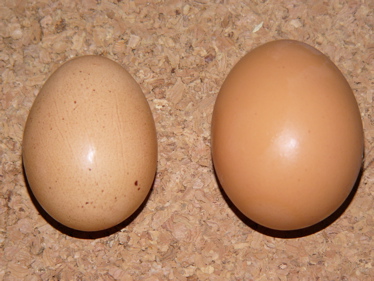I have recently spent time with a few of my chickens meeting and greeting the public in Whole Foods parking lots (thankfully under tents, in shade, with ample snacks for both me and the girls.)
The first thing that people comment on is how pretty my hens are. The feathers aren’t just brown or white! I explain that, just like there are dog breeds, there are chicken breeds. I go on to explain that the differences between chickens are more than skin (feather!) deep. Just like a Golden Retriever has a different personality than a Jack Russell, that so too, does my Barred Rock hen act differently than the Americauna.
I am not surprised about how little the average person knows about chickens, but I am still taken aback at how rarely they apply what they do know about pets to domestic farm animals.
That a person can live with a dog, and talk on and on about Fido’s personality, and yet find it surprising that other animals also have individual temperaments is interesting to me. Have we really so separated farm animals into a class by themselves that they are seen, by the average person, more like a green beans than animals?
Of course, even within breeds, there are differences between individuals. I can tell – from a distance – which of my New Hampshire Reds is Marge. She’s the one making a complaining ruckus. Petunia is quiet. Of the Australorps, Twinkydink is bolder; Blackie can’t bear being anywhere but in the coop near the others. Of the party girls, Egger likes to be held, Betsy only puts up with it.
This idea, that even the animals who provide us with food, are individuals, is discomforting for many people. It’s a lot easier to buy and eat eggs that come from what look like Photoshopped clones. It’s easier to eat bacon when all of the pigs are simply piggy animals eating at the same trough.
Oops, sorry for slipping into this diatribe. I’m not a vegetarian. I’m not even an extreme animal rightist. But I do believe in being thoughtful. Personally, knowing my animals brings me great pleasure. Buying meat from farmers who know their animals brings me satisfaction. I hope it does for you, too.

